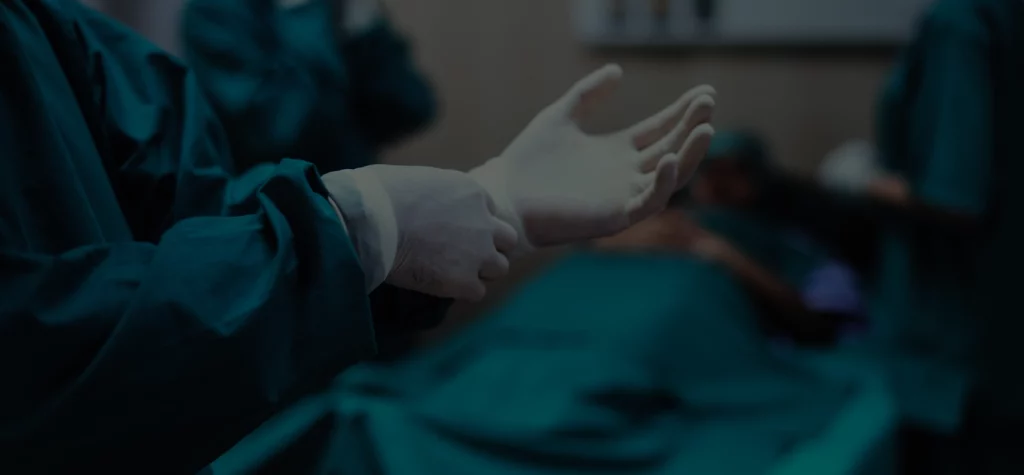2MDOpinion delivers world-class medical second opinion from top specialists, giving patients clarity and confidence in just days, not months
 Written By: Hesam Seyedi | September 26, 2025
Written By: Hesam Seyedi | September 26, 2025
You’ve been through surgery — the preparation, the hospital stay, the recovery — and yet something still doesn’t feel right.
The discomfort, the uncertainty, the quiet worry that maybe something was missed. It’s not doubt; it’s instinct. And you’re not alone for feeling that way.
A second opinion after surgery isn’t about questioning your doctor — it’s about protecting your health.
Many patients discover that another perspective can completely reshape their recovery path. In fact, a systematic review found that 58% of patients who sought a second opinion received a diagnosis different enough to significantly alter their treatment plan or health outcome. That’s more than half of patients finding a new direction simply because they asked for another evaluation.
Surgery is not always the final chapter of your medical journey — sometimes it’s just the beginning. Getting another expert’s insight can reveal what your body’s been trying to tell you all along.
If you’re wondering what the next step looks like, you can get a second opinion from trusted specialists across Canada — quickly, securely, and from the comfort of home. Because every patient deserves not just treatment, but understanding, clarity, and confidence in their care.
Imagine going through the stress of surgery, only to learn later that your diagnosis or treatment plan might not have been completely accurate. It’s a reality more common than most people realize — and it’s why many patients seek reassurance through a second opinion.
Research shows that as many as 88% of patients arriving for a surgical second opinion received a new or refined diagnosis, and more than 21% left with a completely different one. These aren’t minor corrections — they’re life-changing discoveries that can redefine recovery, treatment, and long-term health outcomes.
For Canadian patients, this insight is especially important. With complex care networks, long wait times, and multiple specialists involved, it’s easy for key details to be missed or interpreted differently. A compassionate second opinion can bridge that gap — turning uncertainty into understanding and confusion into confidence.
Whether it’s post-operative pain that doesn’t feel normal or lingering doubts about a recommended procedure, seeking a second perspective isn’t about mistrust — it’s about self-advocacy. It means giving yourself permission to make sure every decision supports your recovery and peace of mind.
A second opinion isn’t about starting from scratch — it’s about taking a closer look at the story your body is already telling. After surgery, your medical journey continues, and sometimes another expert’s insight can reveal something your initial care team couldn’t see.
In one large-scale review of more than 6,700 patient-initiated second opinions, researchers found that 15% of cases resulted in a change of diagnosis and 37% led to a new treatment plan.
More than 10% saw both. These numbers highlight how another qualified perspective can make a measurable difference — even after the most complex surgeries.
During a post-surgical second opinion, your new specialist carefully reviews surgical notes, imaging, lab results, and recovery progress. They’re looking not to criticize, but to confirm — to make sure that what was done aligns with what’s best for you today. Sometimes, that reassurance alone is invaluable. Other times, it leads to discoveries that change the course of care entirely.
For many patients, this process brings something even more important than a diagnosis — it brings peace of mind. When you understand every detail of your treatment and recovery, it becomes easier to trust the path forward and make informed decisions about your health.
| Key Metric | Finding | Source |
|---|---|---|
| Diagnosis and treatment changed after second opinion | 58% of patients had a revised diagnosis or care plan | HealthCentral |
| Rate of new or refined diagnosis (surgical second opinions) | 88% received either a new or refined diagnosis after surgery | Mayo Clinic |
| Change of diagnosis after surgery (large-scale review) | 15% had their diagnosis changed; 37% had treatment changed | Royal Doctors Study |
| Surgical patients with major change after second opinion | 32% experienced a major revision of their care plan | ScienceDirect |
| Doctors' support for surgical second opinions | Standard practice—most surgeons expect or encourage them | NYU Langone / AMA |
You don’t need to navigate this alone — and you don’t have to return to the same clinic to be heard. A post-surgical second opinion is a structured, respectful process designed to clarify what’s next for your recovery.
Start by gathering your essentials: surgical notes and discharge summary, imaging (with reports), pathology results, medication list, and a brief recovery timeline. Then, outline your concerns in plain language — what feels off, what symptoms persist, and what outcomes you’re hoping for. Clear questions lead to clear answers.
Evidence shows this step can be pivotal. Researchers found that upwards of 32% of surgical patients had their treatment plan changed, and half experienced a major change after a second opinion. That’s not just reassurance — that’s a real shift in care.
How to request it, step by step:
1) Ask your primary physician or surgeon for a referral (this is standard and respected).
2) Request copies of your records and imaging; many hospitals can share them securely.
3) Book with an independent specialist in the relevant surgical field (or a multidisciplinary clinic).
4) Prepare focused questions: “Would you recommend a different recovery plan?” “Are there alternative treatments?” “Do my symptoms suggest a complication?”
5) Bring a support person or record key points (with permission) so you don’t miss details.
Remember, a second opinion is a collaboration, not a confrontation. Framing it as “I want to be sure we’ve considered every option” keeps everyone aligned around your recovery and peace of mind.
Next, let’s look at why most doctors support this — and how to discuss it without awkwardness.
You might be surprised to learn that most surgeons actually welcome another professional’s perspective. Medicine isn’t about ego — it’s about accuracy, safety, and patient trust. When you seek a second opinion, you’re not questioning your doctor’s ability; you’re strengthening your care team’s collaboration.
According to NYU Langone and the American Medical Association, seeking a second opinion is now considered a standard practice for patients facing major or complex surgeries — and most doctors expect or even encourage it. This step ensures that every decision is based on comprehensive information, giving you a stronger foundation for recovery and peace of mind.
For patients who’ve undergone surgery, this reassurance can be invaluable. A compassionate conversation with another expert can confirm your current path or open new possibilities you hadn’t considered. Either way, it’s a win — because your health deserves that extra layer of confidence.
And once you receive that second opinion, knowing how to interpret it — and what to do next — can make all the difference.
Hearing a different diagnosis or recommendation after surgery can stir up mixed emotions — relief, confusion, even fear. That’s normal. What matters most is what you do next. A second opinion isn’t the end of the process; it’s the moment you regain control of it.
Start by reviewing both opinions side by side. Identify where they align and where they differ. If something feels unclear, reach back out to both specialists — good physicians appreciate patients who ask questions and want to understand every step of their care.
If the second opinion suggests a different treatment path, bring that report to your family doctor or referring physician. They can help you weigh the risks and benefits, interpret the technical details, and connect you to additional experts if needed. Collaboration, not confrontation, leads to better outcomes.
Most importantly, take your time. Big medical decisions deserve reflection, not haste. As one study showed, patients who actively seek multiple opinions are more confident in their final choice — and more likely to follow through with their treatment plan successfully.
Because the goal of a second medical opinion service isn’t just to change your diagnosis — it’s to give you clarity, confidence, and the reassurance that you’re on the right path to recovery.
No one should have to live with doubt after surgery. When something feels uncertain — whether it’s pain that lingers or instructions that don’t fully make sense — it’s your right to ask for another perspective. You’re not being difficult; you’re being diligent.
Each second opinion represents a chance to strengthen your care, catch what may have been missed, and restore your confidence in the healing process. The data speaks volumes: across studies, patients who sought another expert review often experienced significant improvements in their diagnosis accuracy, treatment plans, and overall health outcomes.
But beyond the numbers lies something more important — peace of mind. When you understand your diagnosis, when you’ve heard more than one professional perspective, you feel empowered to move forward without hesitation. That emotional clarity is as vital as the physical recovery itself.
If you’ve recently had surgery and are still searching for answers, now is the right time to get a second opinion.
The right consultation doesn’t just confirm what’s next — it brings the understanding, assurance, and confidence that every patient deserves.
2MDOpinion delivers world-class medical second opinion from top specialists, giving patients clarity and confidence in just days, not months
Email Us
| Cookie | Duration | Description |
|---|---|---|
| cookielawinfo-checkbox-advertisement | 1 year | Set by the GDPR Cookie Consent plugin, this cookie is used to record the user consent for the cookies in the "Advertisement" category . |
| cookielawinfo-checkbox-analytics | 11 months | This cookie is set by GDPR Cookie Consent plugin. The cookie is used to store the user consent for the cookies in the category "Analytics". |
| cookielawinfo-checkbox-functional | 11 months | The cookie is set by GDPR cookie consent to record the user consent for the cookies in the category "Functional". |
| cookielawinfo-checkbox-necessary | 11 months | This cookie is set by GDPR Cookie Consent plugin. The cookies is used to store the user consent for the cookies in the category "Necessary". |
| cookielawinfo-checkbox-others | 11 months | This cookie is set by GDPR Cookie Consent plugin. The cookie is used to store the user consent for the cookies in the category "Other. |
| cookielawinfo-checkbox-performance | 11 months | This cookie is set by GDPR Cookie Consent plugin. The cookie is used to store the user consent for the cookies in the category "Performance". |
| viewed_cookie_policy | 11 months | The cookie is set by the GDPR Cookie Consent plugin and is used to store whether or not user has consented to the use of cookies. It does not store any personal data. |
| Cookie | Duration | Description |
|---|---|---|
| _ga | 2 years | The _ga cookie, installed by Google Analytics, calculates visitor, session and campaign data and also keeps track of site usage for the site's analytics report. The cookie stores information anonymously and assigns a randomly generated number to recognize unique visitors. |
| _ga_530K1V7VWR | 2 years | This cookie is installed by Google Analytics. |
| Cookie | Duration | Description |
|---|---|---|
| nitroCachedPage | session | No description |